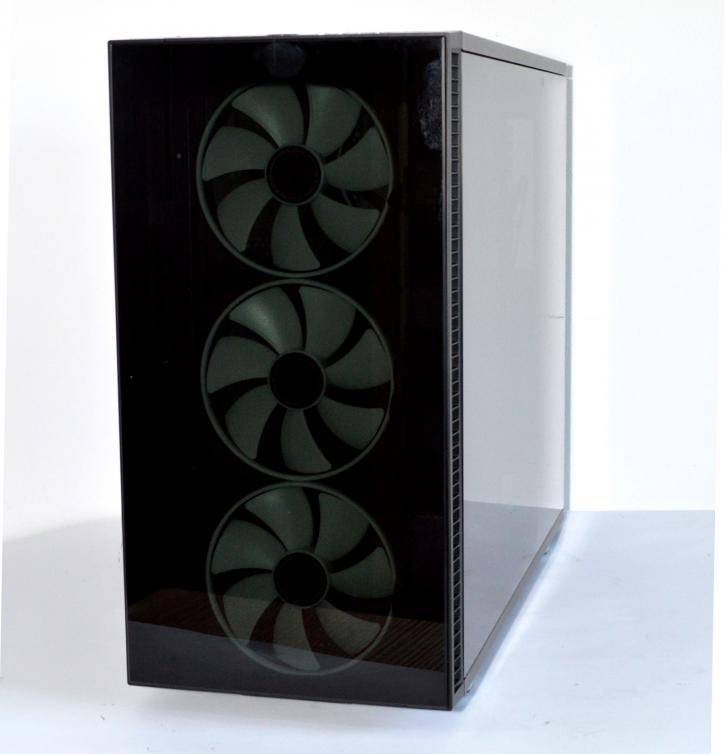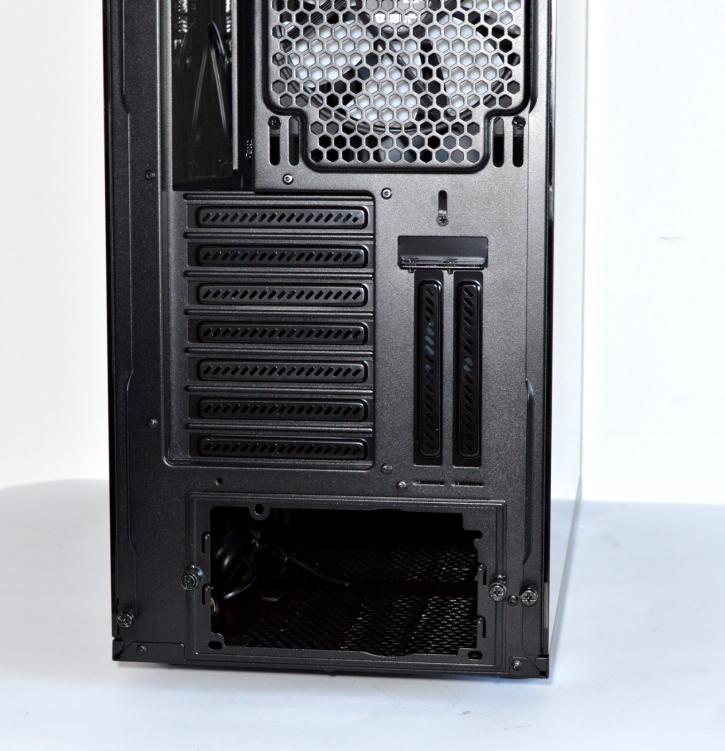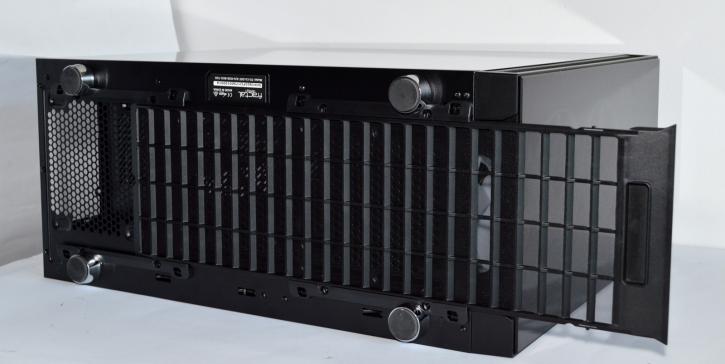Product showcase – exterior
The left-side panel again is made of tinted tempered glass. Photography always is a bit of a challenge that way, in a real environment it looks much better, you'll get the idea and impression though.
The opposite panel is made of the same material. Both are secured with two thumbscrews per panel for transport (you can remove them after that). During normal use, it’s enough to use the newly introduced “push-to-lock latching”, which serves its purpose very well.
Let me just quote the specs here again: the Define S2 Vision RGB weighs about 12.1 kg. The body is all black. At 543 × 233 × 465 mm (LxWxH)/21.37 x 9.17 x 18.3 inches, the size is quite average for this type of chassis. The following motherboard form factors are supported:
- E-ATX (up to 285 mm),
- ATX,
- M-ATX,
- Mini-ITX
The weight of the Define S2 Vision RGB is 12.1 kg (half a kilo more than the regular Define S2), so it’s not a heavy-weight contender, but the chassis is still very stable even without all the hardware inside. Four tempered glass panels surely help in that matter. The front panel is made of tinted tempered glass as well (yes, surprise surprise), and you can clearly see that there are three fans behind it.
There’s been no revolution at the back, and you can spot 7 horizontal and 2 vertical expansion slots, so in a traditional horizontal setup, it’s possible to have dual-slot cards in Crossfire or SLI mode.
The PSU frame is removable (and held in place by two thumbscrews), which makes it easier to install a unit.
The rear fan mount has no pre-drilled holes, and luckily it is possible to adjust the 120/140 mm fan or 120 mm radiator mounting height.
When you look at the bottom section, you’ll find a fan filter that spans the full length of the chassis, and four feet with a silver finish. They form about a 13 mm gap that allows the power supply unit to catch some air. The included dust filter is very big, and it’s easily removed by pulling it towards the front of the chassis.
You’ll find a standard front I/O panel on the top side of the case. This is not a good solution for people who keep their cases on the desk, as reaching the ports might be difficult in a setup like that. While we’re at it, the selection is broad, with two USB 3.0 ports, two USB 2.0 ports, a single USB 3.1 Gen2 Type-C port (that’s a welcome addition), audio jacks, and two buttons for powering on/off and resetting your system. There are no vents in the top section in the standard set-up, and the standard top panel is made (again) of tinted tempered glass.
Here, you can see the standard top panel disengaged from the chassis and the optional replacement panel on top of it. The alternative panel improves airflow (and acts as a dust filter, of course). Unlocking the standard module was easy, and this time (compared with the Define S2) it fitted the chassis better.










